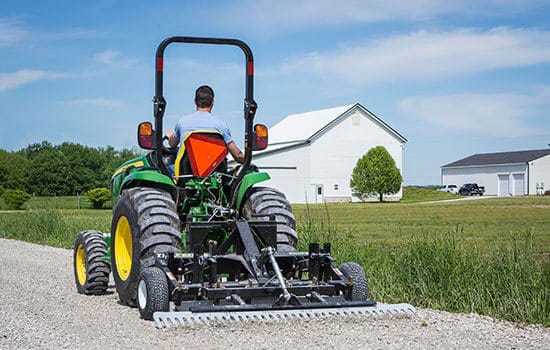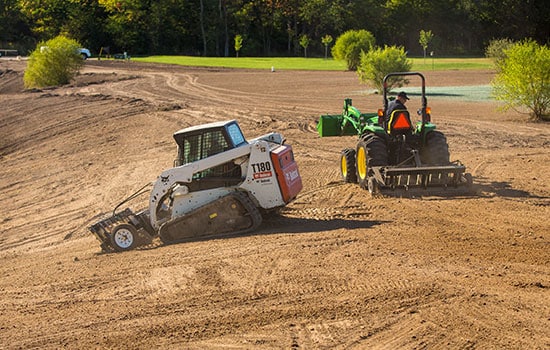How do you Water Your Arena?
Matt has Tips for Your Watering Plan
Watering your arena is vital to protect your horses and riders as well as the quality of your footing. If you are looking to evaluate your current watering system, or starting a watering plan for the first time, Matt has a few helpful Dos and Don’ts for watering a natural arena.
For more information on these or other attachments visit us at abiattachments.com or call a Product Specialist at 877.788.7253
ABI Products Shown In This Video
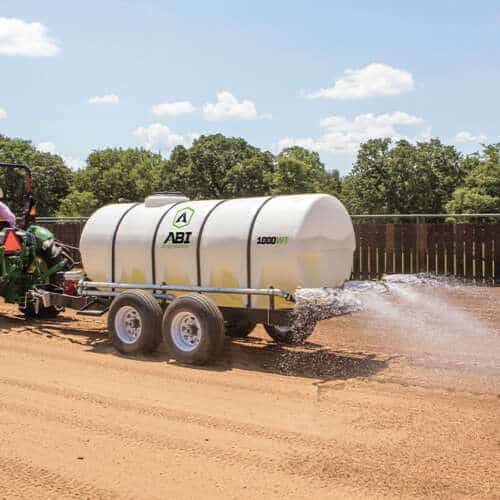
1000 Gallon Water Trailer
- Farm Use: Large Tractor or 3/4-Ton Truck
- Min. Vehicle Towing Capacity: 10,200 lbs., Dual Axle, Commercial Platform
- Starting At: $349/mo.*
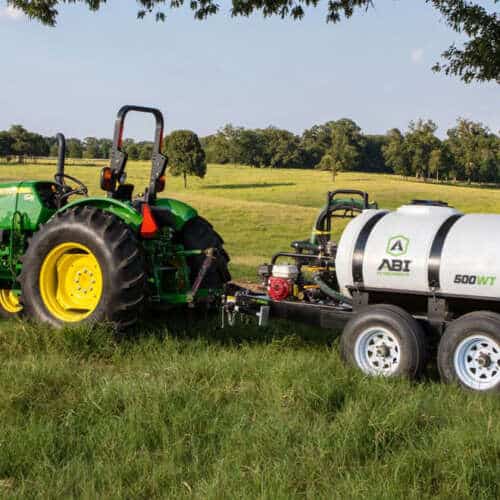
500 Gallon Water Trailer
- Farm Use: Utility Tractor or 1/2-Ton Truck
- Min. Vehicle Towing Capacity: 5,900 lbs., Dual Axle, Commercial Platform
- Starting At: $281/mo.*
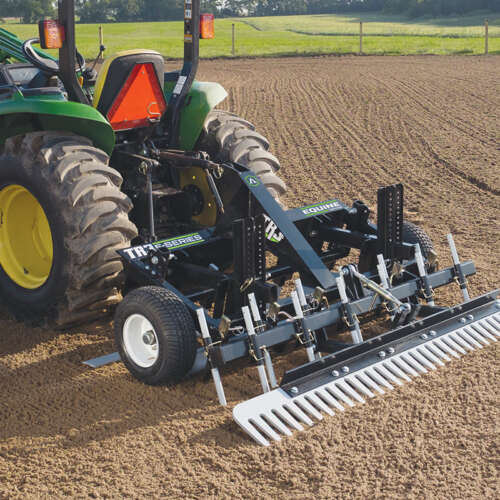
TR3 “E” Equine Edition
- For Sub-Compact & Compact Tractors, #1 Selling Arena Drag
- 6', 7', 8' Widths
- Starting At: $128/mo.*
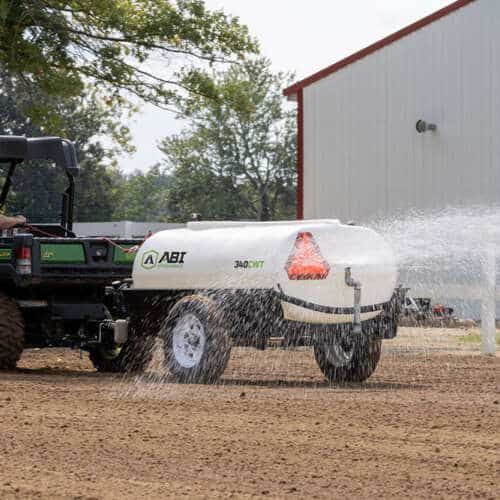
340 Gallon Compact Water Trailer
- Farm Use: Large UTV / Compact Tractor
- Minimum Vehicle RequirementsMin. Weight: 1,500 lbs. On Flat Ground, Towing Capacity 3,300 lbs. On Uneven Terrain
- Starting At: $161/mo.*
Transcript
Water on a Natural Arena
Hi everyone, Matt here with ABI Attachments. Welcome back to the ABI Dirt. Are you feeling the heat? Because we are. It’s finally getting to that 90-degree mark around here in the Midwest. It’s getting hot and it’s got us thinking about water and water trailers specifically, thinking about water in your horse arena, because if you are out riding in these temperatures you probably have water on the brain too, which is why we’ve created this episode for you today.
Keep Your Arena from Drying Out
We’ve got a list of dos and don’ts as you consider the best way to get water into your horse arena, in this hot summer weather. First of all, we’re gonna start with a don’t. Don’t let your arena dry out. Specifically, this is for health and safety concerns.
If you’ve got a dry arena, you probably have dust in the air, dust gets in your lungs, gets in your horse’s lungs, and that’s not good for anyone. In addition to dust concerns, when it gets hot in a dried out natural arena, you’re also now looking at potential foot and leg issues with your horse. Because remember, water is a binding agent. When you’re working with particles of soil, water gets in between those particles and starts to bind things together. That’s what gives you greater purchase when you’re riding. And if you have a dried-out arena, you’re not having enough water, which means your soil, even some really great engineered footing, could be kind of shifty. That gets dangerous.
Create a Watering Plan
Now, into our first do of the list. Do invest in a watering plan. Two keywords there. One, it’s gonna take an investment. And I’m not just talking about a financial investment, I’m talking about a time investment that’s actually keys into that second word of a plan.
Questions to Ask About Your Watering Plan
It’s not just about how to get water droplets onto the arena. It’s about taking the time to think through what is best in your scenario for watering your arena. So, a couple of questions to help you think through.
- Who is going to be doing the watering?
- Who’s working on your property?
- How much water do you think you might need?
- What works best for you?
- Do you need water like a water trailer that you can also use elsewhere around the property?
- Or do you need some kind of watering system?
There are all kinds of really great sprinkler systems out there. Or maybe your best option because of, again, part of your plan is your budget. Maybe at this point you just need somebody with a hose and that’s better than nothing at this point. But take time, invest the time and energy and actually, planning out the best way to get water into your arena. Having a watering plan for your arena is especially important, if you are a competitor. Now, whether you’re at pro, semi-pro, amateur, maybe you’re just getting involved, maybe you’re working at the 4-H level, if you are training in preparation for a competition, it’s very important that you’ve got a plan for the water on your arena, because again, you need that surety. You need that sheer strength. You need the purchase so that your horse knows what to expect, especially, when they do get into some of those maybe nicer arenas that do have a watering plan and have more consistent footing in their arenas.
Avoid Over Watering
Back to the don’t side of things. Don’t drown your arena. It’s really tempting to say, “I’m just gonna turn on the sprinklers or turn on the hose.” And you know what? Eventually, it’ll dry back out, it will, but what you’ll be left with then could be problematic. If you are drowning or overwatering your arena, or if your arena kind of looks like a lake by the time you’re done, you’re gonna run into some problems. You could have some runoff problems, right? You may be losing footing on the outside edge. You could have some extra compaction that you really don’t want in there.
If you’ve got a high clay content in your natural arena, that clay could really seize up, and hopefully, you’ve got a really great arena drag for natural footing. But if you don’t have a really great arena drag that can actually penetrate and decompact, you could have some pretty significant compaction issues, if you overwater and overwatering is especially problematic, if your arena is unlevel. So again, if you’ve got an arena drag that doesn’t level your arena, and if you’ve got a bit of a slope on your arena all that extra water is just gonna wash that footing to one direction. And before you realize it, you’ve got six inches of footing above your base on one portion of the arena and the other portion of the arena may only have, I mean, an inch or less. And that’s gonna be rough when it comes back to training time.
Make Sure Your Watering is Consistent
And speaking of consistency of footing, let’s jump back over to the do side of things. When it comes to the dos and don’ts of watering your natural footing arena. Do find a plan that provides you consistency. And this is where you start to compare some of the different options you have out there when you’re looking at overhead sprinklers or side rail mounted sprinklers, or your nephew with a hose or a water trailer, whatever your options are, as you’re evaluating out your plans, make sure that you can provide consistent watering across your footing, because if you’ve got a certain sprinkler points or if you’re applying more water in some places than others, well, now you’ve got puddling in one spot and that’s pretty typical, whether it’s right as you get into the arena or out of the arena.
If you’ve got the kind of water trailer that doesn’t have an on/off valve the way that ours does or if you’ve got a sprinkler system set up and then you’ve got dry spots here and wet spots there and puddles in the middle, well, now you’re back to the problem of when your training your horse doesn’t know what to expect. Remember, horses are instinctive, intuitive animals. If they step in the center of your arena and it’s fairly loose footing, but then they step on the outside of your arena or towards the rail there and it’s really compacted and dry, well, that’s inconsistent. And then the horse isn’t gonna respond to the same to your commands in both places. So, it’s really important. The same way that it’s important to provide consistent dragging, you need to be able to provide consistent watering as well.
Continue Assessing Your Plan
Back to the don’t side of the list. Don’t forget to check back in. We all wish that there were set it and forget it settings for most things in life. So, you can do something once and never have to worry about it again. When it comes to your watering plan for your natural arena this is not a set it and forget it scenario.
Consider What Can Change
You need to re-evaluate and check back in on your plan on a regular basis. Chances are the riding frequency and patterns in your arena changes based on what season you’re in.
- So, not only are you talking about, hey, the temperature has changed, the climate has changed, how much rain am I getting has changed?
- But also, how many events do you have in your arena?
- How many people do you have riding in your arena?
- As all of the different factors, the usage, and who’s maintaining, and who’s dragging, and what’s the weather?
As all of those things change, you need to constantly re-evaluate your watering plan. You may need to water more certain seasons than you do others. So, as it heats up, make sure to check back into your usage, check back in with, and even check with your riders see what their experience is. May need to dial up and alter your watering plan here just a little bit. And finally, today, I’ll end on a do.
Work With a Trusted Team and Tool
Lastly, do work with someone who’s done this before. Remember, we’ve got an entire team of product specialists here at ABI Attachments. We work with folks like you taking care of natural arenas and synthetic arenas all the time, not only on arena drags, but also water trailers. We talk with folks about their water plan constantly when it comes to working in natural arenas.
So, please feel free, even if you just wanna pick someone’s brain and it’s not a water trailer, give us a call. Ask for a product specialist. Say you’re working on your water plan for your arena and you’d love to talk to somebody who’s done this before. We’d love to work with you. Until next time, everyone, hope you find some shade. Stay cool, and we’ll see you next time.

